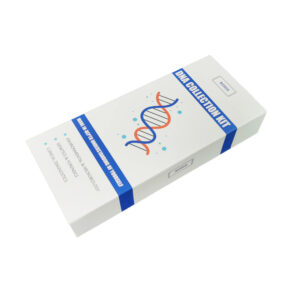Buccal swab samples are commonly used in forensic analysis to collect DNA evidence from individuals. DNA analysis performed on buccal swab samples can help solve crimes, identify missing persons, and exonerate the innocent. The process of collecting a buccal swab sample is straightforward, and anyone with the appropriate training can perform it. In this article, we discuss how to collect a buccal swab sample for forensic analysis.
Step 1: Obtain Informed Consent
The first and most crucial step in collecting a buccal swab is obtaining informed consent from the individual. Before collecting a sample, ensure that the individual is fully aware of the procedure involved, its use, and the potential implications of the results. Obtaining consent helps to maintain ethical standards and guarantees that there are no legal complications.
Step 2: Prepare the Swab Kit
Before starting the collection process, it is necessary to ensure that you have all the necessary materials and supplies. Buccal swab kits typically come equipped with sterile swabs, collection tubes, and labels for the tubes. It is essential to check that the swab kit components are in good condition and have not expired.

MEIDIKE GENE® Buccal swab kits
Step 3: Wear Protective Gear
Wearing protective gear like gloves and a laboratory coat is essential when collecting buccal swabs. The protective gear prevents contamination, which can lead to false results. Additionally, collecting a buccal swab can be a delicate and invasive process, so it is necessary to avoid physical contact with the individual when collecting the sample.
Step 4: Collecting the Sample
To collect the sample, instruct the individual being tested to rinse their mouth thoroughly with clean water. After rinsing, have them tilt their head backward for better access to the inner cheek area. Using sterile swabs, rub the inside of the cheek for about 20 seconds, or until the swab collects enough loose cells. Repeat the process on the other side of the cheek, using a new swab each time.
Step 5: Labeling and Storage
After collecting the buccal swabs, properly label the sample tubes with the individual’s name, the collection date, and any other relevant information. Once appropriately labeled, store the collection tubes according to the kit manufacturer’s instructions. Buccal swabs typically have different storage instructions, depending on the manufacturer, so follow the instructions carefully. Incorrect storage conditions can lead to sample degradation or compromised results, leading to inaccurate analysis.
Collecting a buccal swab for forensic analysis is an efficient, non-invasive method for obtaining DNA samples. It is crucial to follow ethics and obtain proper informed consent before proceeding with the procedure. Wearing protective gear and properly storing the samples ensure accurate results. Following the above steps when collecting buccal swabs for forensic analysis ensures accurate results and a more successful forensic investigation.

















